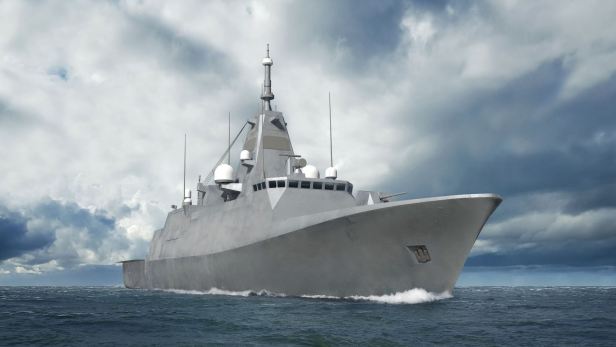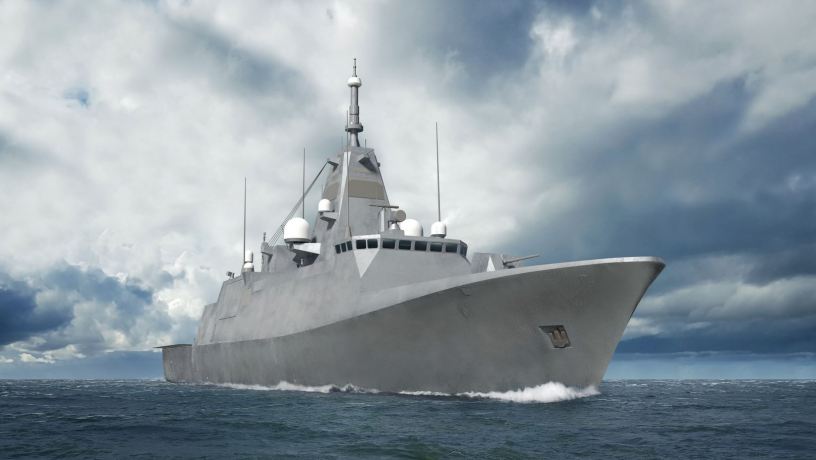As the headline says, yesterday’s big news from the naval sector is not that Finland has ordered the Harpoon and/or the Evolved Sea Sparrow Missile (ESSM). In fact, what has happened is that the US offers for two major Finnish naval programs have become open knowledge. This happened as the US Defense Security Cooperation Agency has requested clearance for the sale of 112 RGM-84Q-4 Harpoon Block II+ ER anti-ship missiles (of which twelve are of the older RGM-84L-4 Harpoon Block II version which will be upgraded) and 68 ESSM missiles. These kinds of pre-clearances are not uncommon, and allow for a rapid deal following a (potential) procurement decision by a foreign customer (thanks to Aaron Mehta for providing insights about US export).

The background is two ongoing Finnish projects: the Pohjanmaa-class multirole corvettes and the PTO 2020 heavy surface-to-surface missile. The PTO 2020 will be found aboard the Pohjanmaa-class as well as replacing the current MTO 85M (roughly a RBS 15 Mk II) on the Hamina-class as part of their MLU as well as in truck-mounted batteries. As the MLU for the Hamina is very much underway already, the winner of the PTO 2020 will be announced during the first half of this year. I am still standing by my opinion that the RBS 15 Mk 3+ and the NSM are the two frontrunners, and would be somewhat surprised if Harpoon won the trophy (and even more so if the Exocet MM40 Block 3 did, though everything is possible).
The Pohjanmaa-class is still in the design stage, with the main contract(s) to be signed this year, and the building phase to start next year. The armament shown on renders include two quadruple mounts of PTO 2020 amidships, the new lightweight torpedo from Saab, the BAE/Bofors 57 mm Mk II deck-gun, and a battery of vertical launch system-cells (VLS). The two main VLS-systems on the market are the French Sylver and the US Mk 41 (a modernized version called Mk 57 is also available, and mounted on the Zumwalt-class). Both are available in different lengths, with the shortest Sylver, the A43 (an earlier A35 concept seems to have been dropped), being around 4.3 m long (or rather, high), and the shortest Mk 41 being 5.2 m long. The 8-cell module of the Sylver is also smaller and lighter than the corresponding 8-cell Mk 41 module, in part because the silos themselves are a few centimeters smaller. For a full run-through of the differences, see this post by the UK Armed Forces Commentary-blog, where the differences are discussed with a keen eye to the pros and cons for the British Type 26 Frigate.

Now, while some vessels, such as the current Finnish Hamina-class and the upcoming British Type 26, feature dedicated cells to their main air-defence assets, the VLS on the Pohjanmaa will likely be home to the ships main air defence weapons. This becomes evident as the ESSM offer is for the weapon quad-packed in Mk 25 modules, designed to fit the Mk 41-system. If the ESSM would be chosen, the Pohjanmaa-class would be by far the smallest vessel to feature the system. The decision to offer the Mk 41 is interesting, as there is a dedicated Mk 56 ESSM VLS-system if the sole use would be for the ESSM.
The ESSM is certainly a competent weapon, and shows what the Navy is aiming for. 8-16 cells with quad packs would provide for 32-64 medium-ranged missiles, a huge boost compared to the current 8 short-range Umkhontos found on the Hamina. While the Mk 41 is too big for the Hamina, the Mk 56 mean that half a dozen ESSM’s could potentially be fitted as part of the MLU if the Navy choose to go down that (unlikely) route. More interesting is that the ESSM could be fired from the Army’s NASAMS surface-to-air batteries, letting the Navy and Army use the same missile stock. The upcoming ESSM Block 2 will feature an active seeker based on that of the AMRAAM, and is potentially the version offered to the Pohjanmaa.
Interestingly, the AMRAAM-ER is a AMRAAM married to the engine of the ESSM, and no, I don’t know what exactly is the difference between an AMRAAM seeker married to an ESSM engine and an ESSM engine married to an AMRAAM seeker.
I am still inclined to believe that the Sylver might be the Navy’s preferred VLS due to the smaller footprint. However, as with the PTO 2020, we will just have to wait and see.


A potential third VLS system is the standalone version of the Extensible Launching System (ExLS) from Lockheed. Apparently it has a much lower footprint than Mk 41 and is compatible with a large number of missiles.
And a fourth is the Adaptable Deck Launcher from BAe, which is designed specifically for use with Mk. 25 quad pods for ESSM, but also for all other Mk. 41 VLS missiles.
https://www.baesystems.com/en/product/adaptable-deck-launcher
And in addition I think (or as far as I have understood) is that the difference between the two missiles is that the ESSM Block II will retain semi-active tracking alongside the dual band active radar, while AMRAAM-ER is active only.
And, for what it is worth, the Bofors 57mm guns lifted off the Haminas to be installed on the Pohjanmaas are Mk III, not a Mk II… The difference is not that big, but it can be seen by the muzzle velocity radar above the barrel.
Yes that’s correct. I asked FMV once though about this muzzle velocity radar, and the presence of this radar doesn’t necessarily mean that the gun itself can use 3P ammo fully. For instance, the old 40 mm Mk2 gun often have this radar, despite the fact that it can only use 3P ammo in air burst mode. The main differences between 57 mm Mk 2 and Mk3 I think are that the Mk3 can use 3P ammo fully and that the cupola comes in two different designs (one more stealthy and one less stealthy).
Thanks, I thought the Mk 3 was the stealth version found on the Visby-class, and the older ones were the Mk 2’s.
The ESSM block II and AMRAAM-ER will not have similar seekers. The ESSM seeker is much more aimed toward low attitude intercepts compared to the AMRAAM seeker which uses a different resolution to better cope with air breathing targets like a fighter.
Also 16 x Aster 15 would be the best choice in my world for air defence, a two stage missile has much better chances of intercepting supersonic sea skimmers.
Aster-15 has, for it’s size, very short range. So short that I suspect the official range is severely censured. However as the official range is all we have to go with that is what we’ll use. The range is stated by MBDA as “30+ km”. Maybe that means 31 km; maybe it means 80 km. We don’t know.
At the same time ESSM has an official range of 50+ km. And you can fit four of them in a silo that takes one Aster.
Double advantage ESSM.
Finally I wonder why a two stage missile would have much better chances of intercepting supersonic sea skimmers? A two stage missile is probably better against a maneuvering target as the missile isn’t out of power but supersonic AShM’s don’t maneuver.